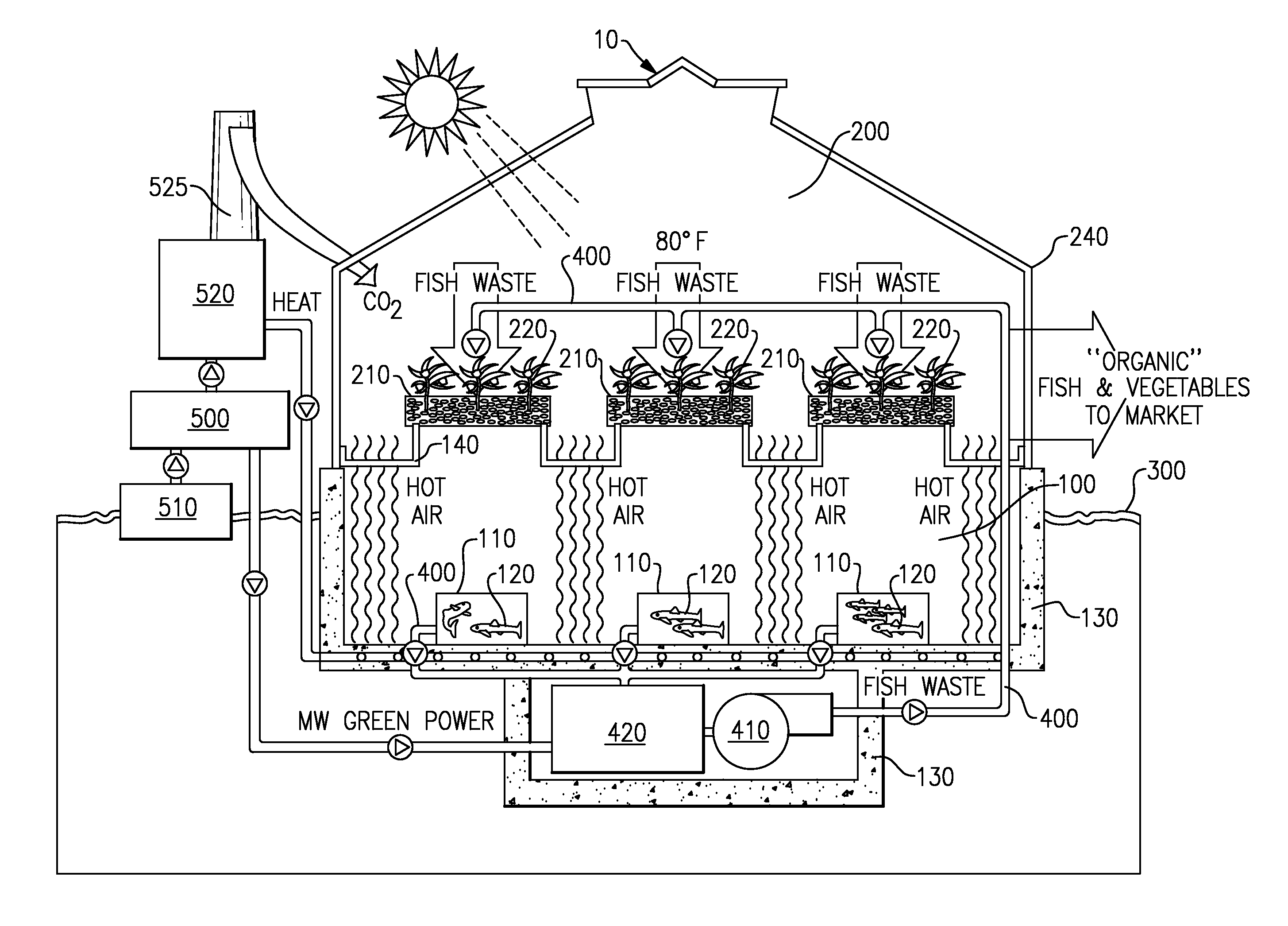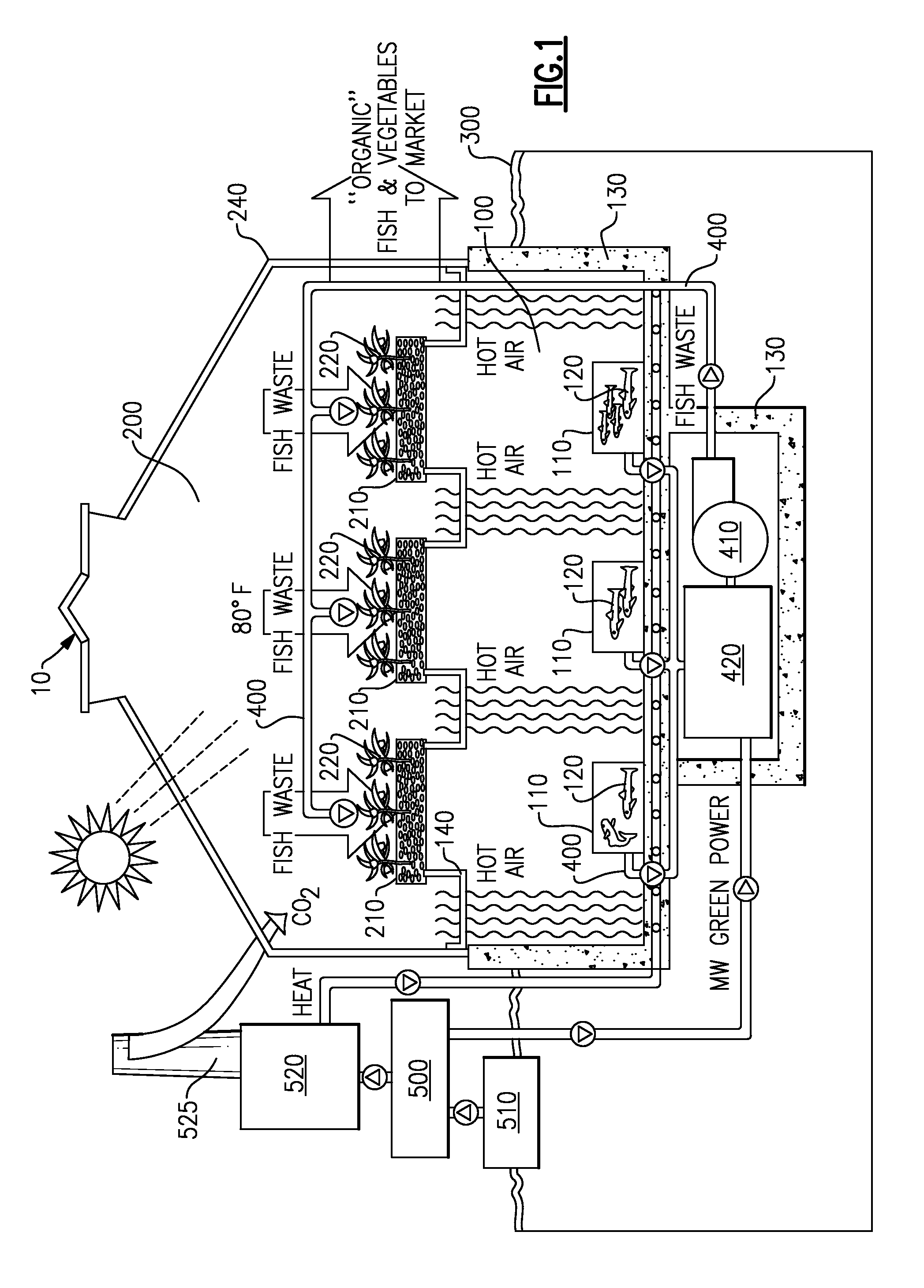Fish and plant factory
- Summary
- Abstract
- Description
- Claims
- Application Information
AI Technical Summary
Benefits of technology
Problems solved by technology
Method used
Image
Examples
Embodiment Construction
[0027]Reference will now be made in detail to the present preferred embodiments of the invention, wherein like numerals refer to like components, examples of which are illustrated in the accompanying drawings.
[0028]Turning to FIG. 1, a schematic view that illustrates a combined interdependent fish and plant factory 10 according to an embodiment of the present invention is shown. The combined interdependent fish and plant factory 10 comprises a fish house 100 with a plurality of fish tanks 110 adapted for containing water and fish 120 therein, and a greenhouse 200 with a plurality of hydroponic tanks 210 adapted for containing plants 220 in grow beds (not shown) therein, within a multilevel housing unit.
[0029]The fish house 100 is located underneath the greenhouse 200 and with the tanks 110 substantially below the ground 300. The fish house 100 is surrounded on three sides by a concrete slab foundation 130, and is preferably adapted for excluding sunlight and maintaining a relatively...
PUM
 Login to View More
Login to View More Abstract
Description
Claims
Application Information
 Login to View More
Login to View More - R&D
- Intellectual Property
- Life Sciences
- Materials
- Tech Scout
- Unparalleled Data Quality
- Higher Quality Content
- 60% Fewer Hallucinations
Browse by: Latest US Patents, China's latest patents, Technical Efficacy Thesaurus, Application Domain, Technology Topic, Popular Technical Reports.
© 2025 PatSnap. All rights reserved.Legal|Privacy policy|Modern Slavery Act Transparency Statement|Sitemap|About US| Contact US: help@patsnap.com



